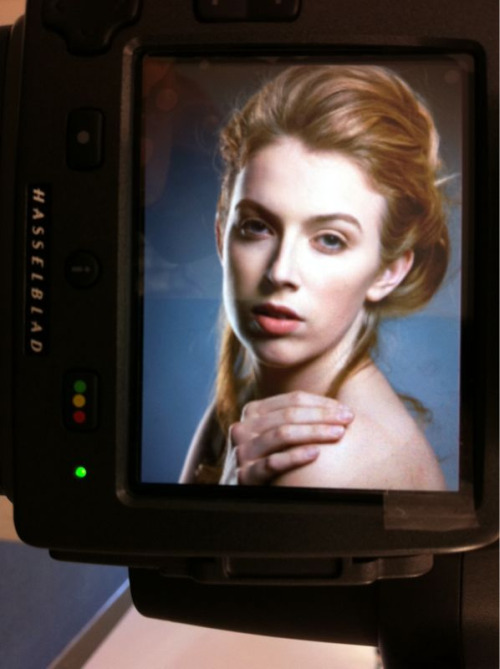While it would seem that I shoot "beauty" all the time, I get real lazy about setting up lights. I often just use a single main light and sometimes just a rim light which usually produces a highly contrasted look. And while this kind of lighting setup is highly conducive towards B&W images, it doesn't fare as well for traditional beauty.
As a result, I've added 2 more "lights" to the typical 2-light setup that I usually use. I've added a background light to control the gradient and light that's hitting my white background. In addition, I've added a fill card to bring up the exposure on the shadow side of the model's face. Fortunately the model is fair-skinned so really there isn't much need for the fill card but it makes me happy so I placed it next to her face anyway.
These components create the following result:

I'm really focused on making sure I'm not blowing highlights on the model's face but at the same time I'm also keenly aware of the gradient/light falloff created by my closely placed gridded beauty dish. I'm also focused on ensuring that the model's face angle is conducive to my placement of the main light. If she drops her chin too much, she'll create dark shadows under her eyes that won't look good. Knowing her head placement angles and limits is critical in generating a good variety of usable shots.
Beyond the above mentioned criteria, I'm 100% focused on getting the model to emote, create a feeling, and generate a connection with the camera/audience. A technically flawless image is only just a technically flawless image. What I'm looking for is that evocative image that jumps out and speaks to me. So I'm constantly trying to get the model to give me "more". How you define "more" depends on your style and experience. Everyone has his/her own version of "more".
Over the next few looks, I might change up a few things here and there but shooting beauty is a lot about control... so my changes will be minimal. The lighting in beauty is so precise and exact that it's nearly impossible for me to allow the model any range of motion. If I start moving things around I have to remeter each light (yeah, with a lightmeter) and take more test shots. It's better if we stick with roughly the same setup and not alter too much or else the model will have to relearn each lighting schematic.
Looking forward to seeing the results :) The first look was solid!

Charles I can't wait to see how these ones come out!
ReplyDelete